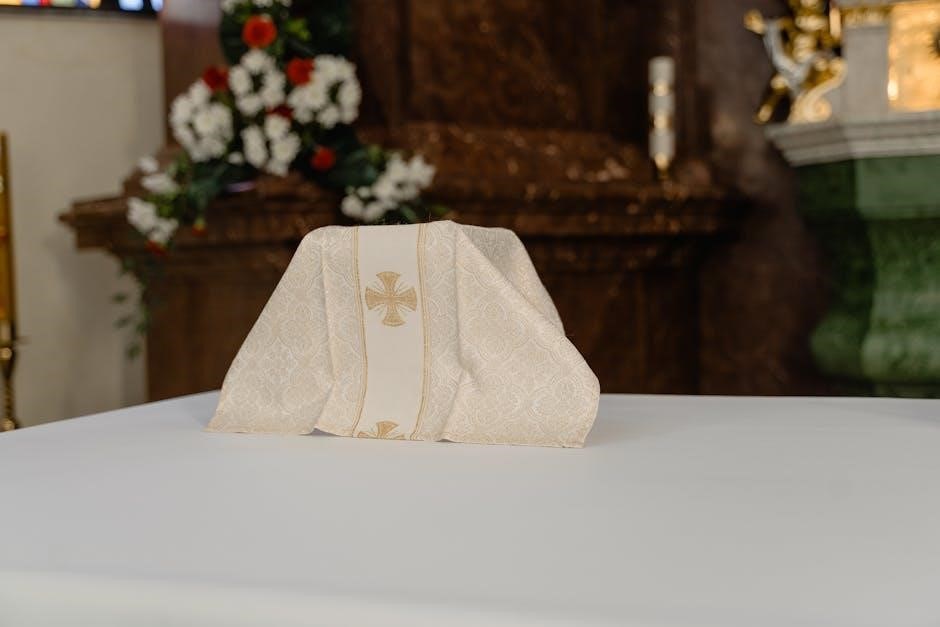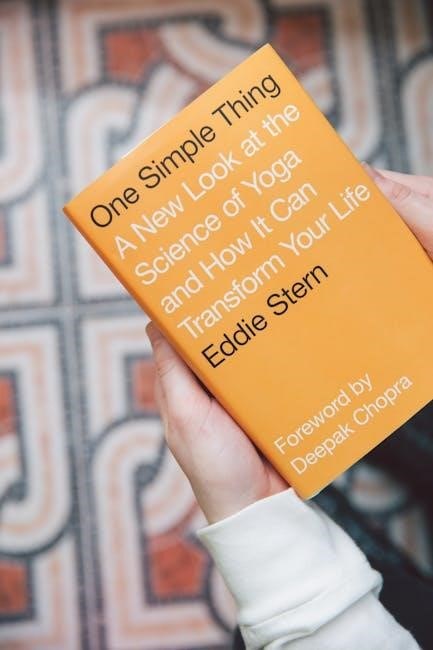Overview of “The Case for Christ”
“The Case for Christ” explores Lee Strobel’s investigation into the evidence for Jesus. Strobel, a former atheist, applies his legal and journalistic skills to examine historical and expert testimony, leading to a compelling journey.
Lee Strobel’s Journey
Lee Strobel, a journalist and lawyer, embarked on a personal investigation of the claims of Christianity. Initially an atheist, Strobel applied his legal expertise to analyze the historical evidence surrounding Jesus Christ. Driven by skepticism and a desire for factual truth, he interviewed experts in relevant fields like history, archaeology, and theology. His journey involved rigorously examining eyewitness accounts, historical documents, and arguments for and against the divinity of Jesus. Ultimately, Strobel’s investigation led him to a profound conversion from atheism to faith, documented extensively in “The Case for Christ”.
Key Evidences Explored in the Study Guide
The study guide dives into crucial evidence supporting the claims about Jesus. It examines eyewitness accounts, historical context outside the Bible, and the resurrection, providing a comprehensive analysis.
Eyewitness Accounts
The study guide meticulously analyzes eyewitness testimonies found within the Gospels, scrutinizing their reliability and consistency. It explores the claims made by those who directly encountered Jesus, examining their perspectives on his life, teachings, miracles, death, and resurrection. The aim is to determine the veracity of these accounts and assess their impact on understanding the historical Jesus, while also addressing potential challenges to the accuracy of the reported events and considering alternative interpretations of the available information.
Historical Evidence Outside the Bible
This section delves into non-biblical sources to corroborate the existence and impact of Jesus. Examining Roman and Jewish historical texts, the study guide seeks independent verification of key events described in the Gospels. References to Jesus and early Christians from historians like Tacitus and Josephus offer valuable perspectives. These external sources help build a broader historical context, providing additional layers of evidence to support or challenge the biblical narrative, fostering a comprehensive understanding of Jesus within the ancient world.
The Resurrection
The resurrection of Jesus forms a cornerstone of Christian faith; This section of the study guide examines the evidence surrounding this pivotal event. It explores the empty tomb, the eyewitness accounts of Jesus’ appearances after his death, and the disciples’ transformation. The guide analyzes the plausibility of alternative explanations for these events, weighing the historical and theological implications. Exploring the resurrection provides a deeper understanding of its impact on the early church and its continued significance for believers today.
Structure of the Study Guide
The study guide is structured for group or individual use. It incorporates video sessions, discussion questions, and personal reflection prompts. This structure aims to facilitate deeper engagement with the evidence presented.
Six-Session Format
The “Case for Christ” study guide adopts a six-session format, allowing for a focused and manageable exploration of the evidence surrounding Jesus. Each session delves into specific aspects of the case, such as eyewitness accounts, historical evidence, and the resurrection. This structured approach enables participants to systematically examine the information and engage in thoughtful discussions. The format also ensures a gradual unveiling of the evidence. This allows participants to process and internalize the material at their own pace, fostering a deeper understanding of the claims made about Jesus.
Video Component
The “Case for Christ” study guide incorporates a video component, featuring Lee Strobel as he presents evidence and interviews experts. This visual aid enhances the learning experience by providing dynamic content and engaging presentations. The videos offer a blend of investigative journalism and expert testimony, bringing the evidence to life in a compelling manner. Furthermore, the video component helps to break up the reading material and facilitates group discussions. The study guide provides video notes to make it easier to follow the material. This feature is designed to keep participants engaged and enhance their comprehension of key concepts.
Target Audience
The study guide targets both believers seeking deeper understanding and skeptics exploring Christianity. It offers a journalistic approach, appealing to those who appreciate evidence-based investigation of faith claims.
Believers Seeking Deeper Understanding
For Christians desiring a more robust defense of their faith, the study guide offers historical and expert testimony. It strengthens conviction by providing evidence-based answers to common questions. Believers gain confidence in discussing their faith with others, equipped with facts and insights from Lee Strobel’s investigation. The guide facilitates personal reflection and application of biblical truths, leading to a more profound and informed faith experience. It aims to solidify existing beliefs through reasoned arguments and verifiable evidence presented in a clear and accessible manner.
Skeptics and Seekers
The study guide provides a neutral ground for skeptics and seekers to explore the claims of Christianity. Lee Strobel’s journalistic approach encourages critical thinking and examination of evidence. It addresses common doubts and objections with reasoned arguments and expert testimony. Seekers find a structured path for investigating Jesus’s life, death, and resurrection. The guide fosters open-minded inquiry and encourages personal reflection on the evidence. It presents information in an accessible way, avoiding religious jargon and promoting a fair assessment of historical facts, fostering an environment conducive to exploration.

Using the Study Guide for Group Discussions
The study guide facilitates engaging group discussions about the evidence for Christ. It provides a structured framework for exploring key themes and encourages participants to share insights and challenge assumptions in a supportive environment.
Discussion Prompts and Questions
The study guide incorporates carefully crafted discussion prompts and questions designed to stimulate thoughtful dialogue within the group. These prompts delve into the core arguments presented in “The Case for Christ,” encouraging participants to analyze the evidence critically. Questions explore the implications of the evidence, prompting personal reflection and challenging pre-conceived notions. The goal is to create an open forum where diverse perspectives can be shared respectfully, leading to a deeper understanding of the claims surrounding Jesus Christ and their relevance to contemporary life. The questions aim to foster intellectual and spiritual growth;
Application of Insights
Beyond intellectual understanding, the study guide emphasizes the practical application of insights gained. Participants are encouraged to consider how the evidence for Christ impacts their daily lives, relationships, and worldview. The study guide facilitates a bridge between knowledge and action, prompting individuals to live out their faith more authentically. It calls for introspection, urging participants to examine their own beliefs and behaviors in light of the presented evidence. Ultimately, the goal is to transform understanding into a tangible expression of faith, impacting personal decisions and interactions with the wider world, fostering a more meaningful Christian life.

Additional Resources
To enhance the learning experience, “The Case for Christ” offers supplementary materials. These resources include the original book by Lee Strobel, providing in-depth analysis, and a compelling movie adaptation, visualizing Strobel’s journey.
“Case for Christ” Book
Lee Strobel’s book, “The Case for Christ,” serves as the foundation for the study guide. This book details Strobel’s personal investigation into the claims of Christianity. Applying his expertise as a journalist and lawyer, he examines historical evidence and interviews experts to determine the validity of the Christian faith. The book presents a compelling narrative of Strobel’s journey from atheism to faith, offering readers a detailed exploration of the evidence surrounding Jesus Christ, his life, death, and resurrection, inviting readers to evaluate the evidence themselves.
“Case for Christ” Movie
The film adaptation of “The Case for Christ” brings Lee Strobel’s journey to life visually. The movie portrays his investigation into the evidence surrounding Jesus, showcasing his interviews and personal struggles. It offers a compelling and accessible entry point for those unfamiliar with the book. The movie can enhance the study guide experience, providing a visual context for the evidence and Strobel’s transformation. It can be a powerful tool for engaging groups and sparking discussions about faith, doubt, and the search for truth.
“Case for Christ” for Kids
“Case for Christ” for Kids adapts Strobel’s investigation for younger audiences. This version simplifies the evidence for Jesus, making it understandable and engaging for children, fostering early faith development.
Adaptation for Younger Audiences
The adaptation for younger audiences simplifies complex concepts from the original “Case for Christ” into age-appropriate language. Stories, visuals, and interactive elements replace dense arguments, making the core message accessible. This approach ensures children grasp the basic evidence supporting Jesus’ existence and claims without being overwhelmed. Activities and discussions are tailored to their developmental stage, encouraging critical thinking and sparking curiosity about faith. The goal is to provide a foundational understanding, fostering a lifelong pursuit of truth about Jesus in an engaging format.

Impact and Transformation
“The Case for Christ” has sparked profound transformations in individuals and communities. Skeptics find compelling evidence, leading to faith, while believers experience a strengthened understanding and renewed commitment to their beliefs about Jesus.
From Atheism to Faith
Lee Strobel’s personal journey from staunch atheism to unwavering Christian faith forms the bedrock of “The Case for Christ.” His transformation, driven by rigorous investigation and critical analysis of historical evidence, serves as a powerful testament to the transformative potential of seeking truth. Strobel’s story resonates deeply with skeptics and seekers, offering a compelling narrative of intellectual honesty and spiritual awakening, demonstrating how evidence can pave the path from disbelief to profound faith. This narrative encourages open mindedness.
Availability and Formats
“The Case for Christ” is widely accessible. The study guide is available in book, video, and digital versions. This multi-format availability ensures accessibility for various learning preferences and group study settings.
Book, Video, and Digital Versions
The study guide for “The Case for Christ” offers flexible learning options. The book format provides in-depth study and reflection. The video version features Lee Strobel guiding viewers through the evidence. Digital formats offer convenient access on various devices, enhancing accessibility for individual or group study. This variety caters to different learning styles and technological preferences, making the material readily available to a wide audience. Consider which format best suits your learning needs and group dynamics.
The Author’s Background
Lee Strobel, the author, is a former legal journalist and atheist. His background provides a unique perspective. He uses his skills to investigate the claims about Jesus in “The Case for Christ”.
Lee Strobel’s Expertise as a Journalist and Lawyer
Lee Strobel’s background as a journalist and lawyer uniquely equips him for his investigation in “The Case for Christ.” His journalism experience honed his skills in investigation and critical analysis. His legal training enables him to evaluate evidence and present arguments effectively. Strobel applies these skills to the claims surrounding Jesus. He approaches the topic with the rigor of a legal professional, seeking to uncover the truth through a careful examination of the available evidence. This combination is central to his approach.

Critical Reception and Reviews
“The Case for Christ” and its study guide have garnered diverse community feedback. Many find it insightful and helpful for strengthening faith. Others appreciate its investigative approach, while some express concerns about bias.
Community Feedback
Community feedback on “The Case for Christ” study guide is varied. Many believers appreciate its comprehensive approach to examining evidence supporting their faith, finding it strengthens their understanding. Some highlight its accessibility for group discussions, fostering deeper engagement with the material; Skeptics acknowledge Strobel’s investigative approach, while some express reservations about potential biases. Overall, the study guide sparks thoughtful conversations, prompting individuals to explore their beliefs and the historical context of Christianity. The impact on personal faith journeys is a recurring theme in reviews and testimonials.
Related Study Guides
Complementing “The Case for Christ,” are related study guides like “Case for Christmas” and “Case for Easter.” These delve into the evidence surrounding Jesus’ birth and resurrection, expanding the scope of inquiry.
“Case for Christmas” and “Case for Easter”
Expanding beyond the core investigation of Jesus’ life and claims, “Case for Christmas” and “Case for Easter” offer focused studies. These guides explore specific events, examining the evidence and historical context surrounding Jesus’ birth and resurrection, respectively. They invite deeper reflection on the significance of these pivotal moments in Christian theology. These resources often include video components, study guides, and discussion prompts, facilitating individual and group exploration of the evidence. “Case for Christmas” explores the identity of Jesus while “Case for Easter” covers Jesus’ death and resurrection.
